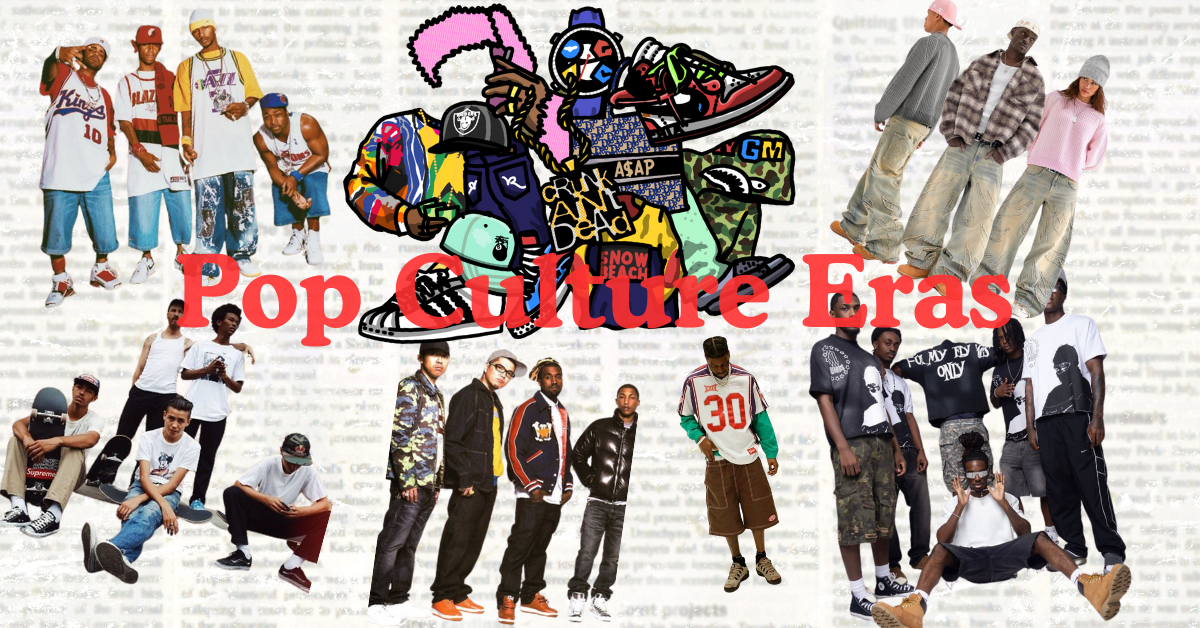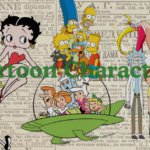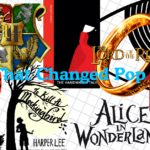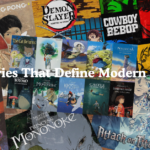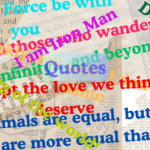A Personal Story to Start
Growing up in the early 2000s, I was glued to MTV, mesmerized by the oversized jerseys and snapback hats of hip-hop artists like Nelly and 50 Cent. Around the same time, skateboarding culture was taking over, thanks to Tony Hawk games and the Vans Warped Tour. I wasn’t just consuming these styles—I was living them. My fashion choices felt like an extension of my personality, a nod to the cultural phenomena that shaped my world. That’s when I realized: fashion isn’t just about clothing—it’s a reflection of who we are, where we’ve been, and what we believe in.
Streetwear, as we know it today, is built on the shoulders of pop culture movements. Each era brought its own distinct flavor to the mix, turning fashion into a statement. Let’s explore 10 transformative pop culture eras that have revolutionized streetwear—and why they still matter.
10 Pop Culture Eras That Defined Streetwear
1. The 1980s: The Birth of Hip-Hop
The Bronx gave us more than just music; it gave us a movement. Hip-hop culture introduced bucket hats, shell-toe Adidas, and tracksuits into mainstream fashion. Thanks to groups like Run-DMC and LL Cool J, streetwear became a badge of authenticity and rebellion.
2. The 1990s: Grunge and Skater Culture
Seattle’s grunge music scene, led by bands like Nirvana and Pearl Jam, made flannel shirts, ripped jeans, and combat boots the unofficial uniform of disaffected youth. Simultaneously, skater culture rose to prominence, popularizing baggy pants, graphic tees, and Vans sneakers. Skating wasn’t just a sport; it was a lifestyle, immortalized in brands like Supreme and Thrasher.
3. The Late 90s: Anime’s Global Influence
The late 90s saw anime explode onto the global stage, with shows like ‘Dragon Ball Z’ and ‘Sailor Moon’ inspiring bold, colorful designs. Streetwear brands began incorporating anime-inspired graphics, creating a subculture of fans who wore their love for animation on their sleeves—literally.
4. The Early 2000s: Hip-Hop Bling Era
With artists like Jay-Z and Missy Elliott leading the charge, oversized jerseys, Timberland boots, and iced-out chains defined early 2000s hip-hop fashion. Streetwear brands like Rocawear and Sean John blurred the lines between luxury and street style, setting the stage for a new era of cultural crossover.
5. The 2000s: Skateboarding Renaissance
The release of ‘Tony Hawk’s Pro Skater’ video games reignited interest in skate culture, with brands like Vans and DC Shoes dominating wardrobes. Streetwear became synonymous with skate parks, rebellion, and DIY aesthetics.
6. The Mid-2000s: The Rise of Emo and Pop Punk
Fueled by My Chemical Romance, Fall Out Boy, and Warped Tour culture, skinny jeans, band tees, and studded belts became staples for an entire generation. This era taught us that streetwear could be a canvas for emotional expression.
7. The 2010s: Hypebeast Culture and Sneaker Domination
Streetwear became synonymous with exclusivity as brands like Supreme and Off-White turned limited drops into cultural events. Sneakers, especially collaborations with Nike and Adidas, became a collector’s obsession, solidifying streetwear as high fashion.
8. The 2010s: Anime Meets Streetwear
Anime’s influence grew even stronger in the 2010s, with collaborations between streetwear brands and franchises like ‘Naruto’ and ‘Attack on Titan’. Fans embraced oversized hoodies, graphic tees, and neon accents inspired by their favorite shows.
9. The Y2K Aesthetic (Late 2010s – Early 2020s)
Shiny metallics, tiny sunglasses, and baby tees inspired by early 2000s pop culture made a massive comeback. Brands like Juicy Couture and Ed Hardy were resurrected, blending nostalgia with modern streetwear sensibilities.
10. The Present: Streetwear as a Global Phenomenon
Today, streetwear is a melting pot of influences, from K-pop to techwear. Groups like BTS and BLACKPINK dictate trends globally, while sustainability and local artistry are driving forces in the industry.
Why These Eras Matter
Streetwear is more than just fashion—it’s a mirror reflecting our cultural values and shifting identities. Each era brought something new to the table, challenging norms and rewriting the rules of self-expression.
A Global Language: These movements transcended borders, connecting people through shared aesthetics and values.
A Platform for Storytelling: Whether it’s a flannel shirt or an anime-inspired hoodie, every piece tells a story about the person wearing it.
A Blueprint for Creativity: Streetwear brands like InkspiredBD draw from these eras to create designs that are culturally rich, emotionally resonant, and endlessly cool.
How You Can Embrace These Eras
Fashion is personal. Your favorite pop culture moments—whether it’s blasting ‘Smells Like Teen Spirit’ or binge-watching ‘One Piece’—can inspire your style today. At InkspiredBD, we channel the same passion into our designs, creating streetwear that’s as meaningful as it is stylish.
So, which era speaks to you the most? Are you a grunge enthusiast, a sneakerhead, or a lover of anime aesthetics?
Join the Conversation
We’d love to hear from you! Share your favorite pop culture era and how it’s influenced your style. Follow InkspiredBD to discover designs that celebrate the spirit of these iconic moments.
Let’s keep the conversation going—because streetwear isn’t just about looking good. It’s about wearing your story.

